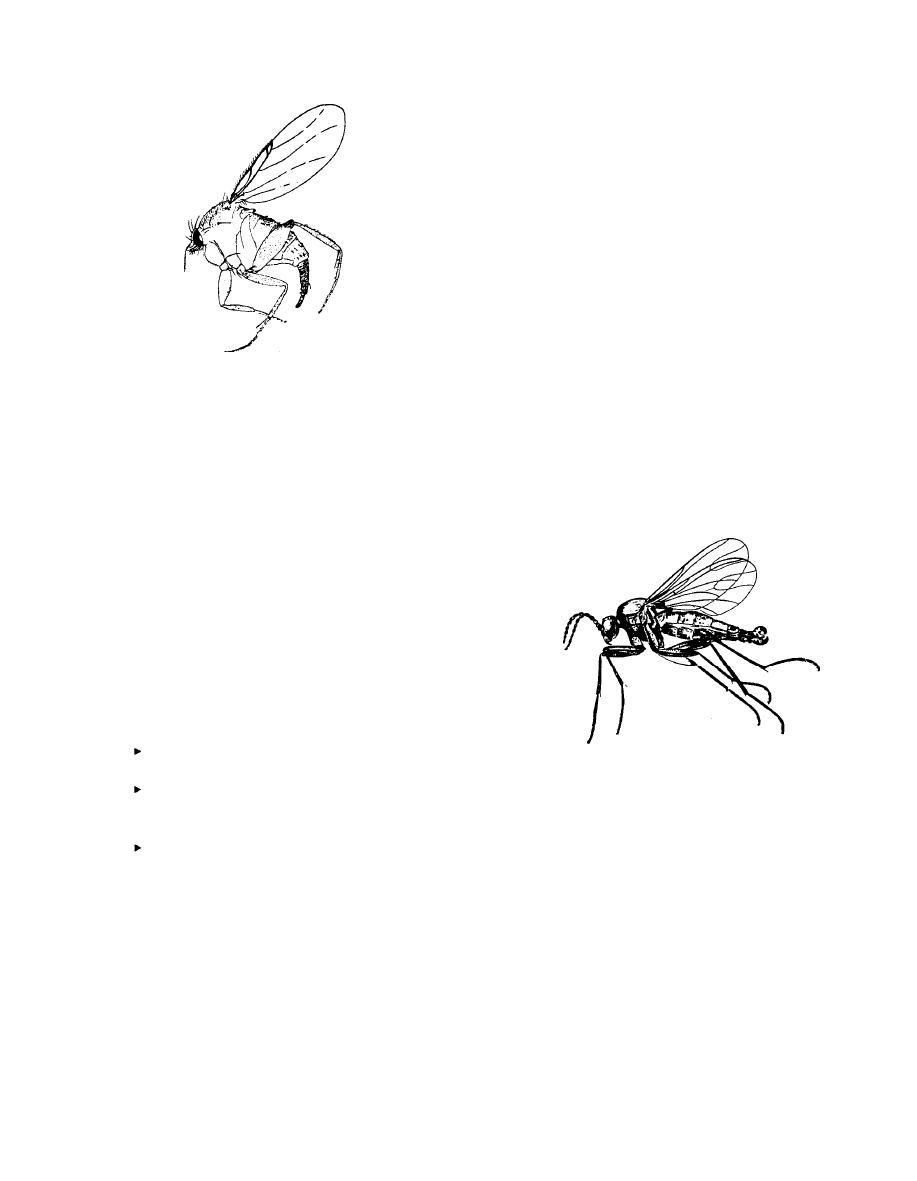

Custom Search
|
|

|
||
 dry out, large numbers can enter dwellings from the
the wing tip, and other veins are weak or nearly
invisible. Phorids run in short jerks.
sewer.
Drain traps should be cleaned mechanically or
with drain cleaners. Without larval control, adults will
continuously emerge.
In sewage treatment plants, drain flies feed on the
gelatinous material that collects on stones in trickling
filter beds. Over time, however, cast skins from these
filter flies can slow down water drainage. When
sewage treatment plant filter beds malfunction or
become "out of balance," the moth flies can become
problems in nearby neighborhoods. The filter bed
should be cleaned by reverse or back flushing.
FUNGUS GNATS
The families Mycetophilidae and
Phorid Fly
Sciaridae
These flies become problems when they infest
Fungus gnats are slender, delicate mosquito-like
decomposing plant or animal matter. Buried animals,
insects. Their larvae infest moist soil and feed on fungi
garbage, or broken sewer lines support large numbers
associated with decaying vegetation. Indoors, fungus
of phorids. Phorids also infest bodies in mausoleums.
gnats infest flower pots. They also build up in pigeon
Adults are able to emerge from the underground
droppings on outside ledges, then enter dwellings
infestation site upwards through several feet of soil. If
through nearby windows.
broken sewer lines are under buildings, phorids can
come up through cracks in concrete floors or around
floor drains. When water and sewage wash out cavities
in the soil around the pipe, immense numbers of flies
are produced.
Inspection
Carefully identify the infesting fly as a phorid.
Locate the area where most flies appear. Ask clients if
there have been sewer problems, buried garbage,
decaying vegetable, or animal matter close by.
Habitat Alteration
Remove decaying matter and soil
contaminated by it.
Fungus Gnat
Where sewer lines must be repaired,
insist that sewage contaminated soil also
MIDGES
be removed.
The family Chironomidae
Caulk all floor and wall cracks where
Midges look very much like mosquitoes but do
flies may enter.
not bite. Midge larvae live in water, especially in
MOTH FLIES OR DRAIN FLIES
quiet, still water.
The family Psychodidae
Adult midges are the driving force behind some
spider infestations on buildings and monuments (see
Moth flies are about l/8 inch long. Their dark
Orb Web spiders, Chapter 3). The adults fly to lights
color comes from tiny hairs that cover the wings
and enter dwellings through gaps.
which are held in roof-like fashion over the body.
Moth flies have long, drooping antennae.
Management is site specific; pesticides are
Larvae live in the gelatinous material in sink
generally not useful. Manipulating lights will reduce
drains traps and sewers. Where. sinks regularly
midge attraction. As part of the pest management plan,
overflow, these flies build up in the overflow pipe.
note flight periods and times. The larvae of some
When drain traps of sinks, commodes, and floor drains
species of midges indicate a larger pollution problem.
Module Two, Chapter 1, Pg 5
|
 |
|
 |
||